Contractor Agreements
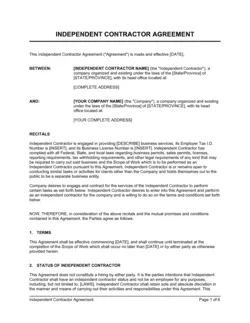
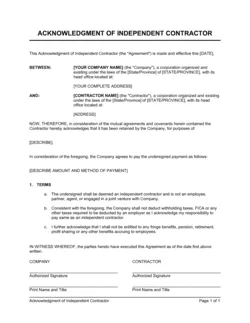

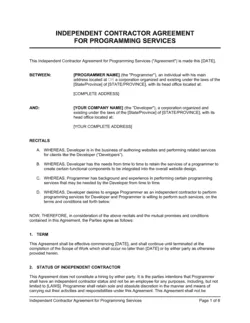

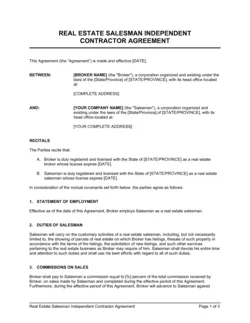
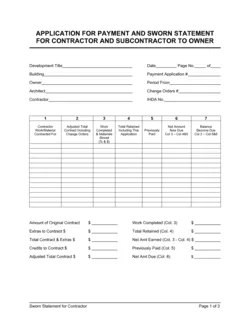

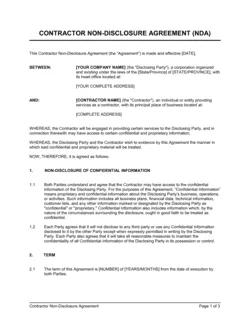

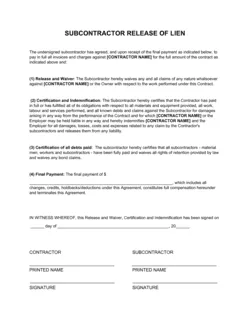
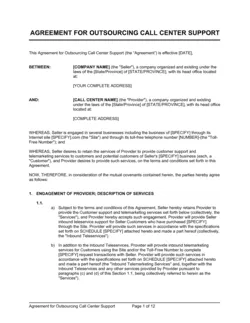

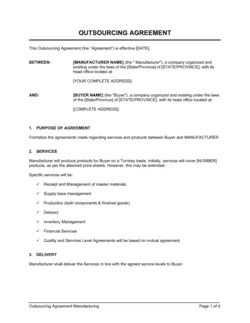






Contractor Agreements: A Comprehensive Guide
Get a well-formatted Contractor Agreement template that will define a business relationship between contractor and client and the details involved.
What is a Contractor Agreement?
A contractor is someone that undertakes a contract to provide materials or labor to perform a service or do a job. State laws specify that only some contracts have to be recorded in writing. Nonetheless, to have a composed agreement for a deal is crucial for business. Fortunately, the contract does not have to be written by a lawyer. The deal can be straightforward based on the requirements of the agreement. Therefore, a contractor agreement is a contract that governs the specifics of a project or task between two parties. The project is usually short term, and the specific job will be stated, unlike an employment contract.
A contractor can either be paid as he performs the job or at any moment, e.g., hourly or daily, based on the agreement. Therefore, a contractor agreement is essential. It can be used by various entities, including consultants, lawyers, accountants, agents, brokers, and creative professionals, to name a few.
If you are a contractor or looking to hire one, you should start working with a contractor agreement template, which you can also download in Business-in-a-Box. Some of our most popular contractor templates include the independent contractor agreement, subcontractor agreement, agreement between owner and contractor template and the time and materials consulting agreement.
THE CONTRACTOR AGREEMENT TEMPLATE OVERVIEW
A contractor should never reach an agreement with another party without a contractor agreement. It's a smart thought to get a composed contract from every individual or business you work with. In the same way, an employer should not hire a contractor without a written agreement. A contract can help put light on numerous questions and disputes, and it will be essential if an indictment is necessary.
Recruiting a contractor seems simple since there is no tedious paper involved as in hiring an employee. However, that is not always the case. It is essential to build the terms under which you will cooperate to escape potential issues with some other business relationships. This kind of contract has some significant terms you ought to incorporate. New businesses can ease the process of recruiting a contractor by utilizing a normalized agreement. Using a legal template, you can guarantee that everybody you hire involves a consistent and legitimately faultless record.
In a fast-paced industry where you may need to enter agreements with multiple contractors or multiple business owners, it is necessary to use a template. This ensures that no time is wasted on drafting legal agreement templates every time you enter a contract. It also saves you the cost of engaging your lawyers too.
Consider using one of our prepared templates, which you can simply edit and input the details of the contract.
TYPES OF CONTRACTOR AGREEMENTS
There are various kinds of contractors; notwithstanding, when utilized, the term ordinarily refers to any of the following:
- General contractor: They usually take on projects that involve the construction of structures or facilities.
- Subcontractor: They oversee only a particular portion of a contract, usually that of another contractor or individual. The best document for this type of agreement is our subcontractor agreement.
- Independent contractor: commonly recruited to carry out a particular task.
- Defense contractor: This an individual or business in charge of supplying arms and weapons or military merchandise to the government.
- Government contractors: They provide the government’s goods and services.
PURPOSE OF A CONTRACTOR AGREEMENT
A contractor agreement template is a composed contract that explains the working course of action between a contractor and the client. Contracts are compulsory for business relationships; however, they're especially significant for:
- Giving legal protection
- Stating the jobs and obligations to be performed
- Providing the terms and conditions
WHAT TO INCLUDE IN A CONTRACTOR AGREEMENT
A contract agreement should contain details that provide as much legal protection as possible. The content must state precisely what all parties stand to gain from the deal.
The specific words and segments may be different contingent upon the industry, customer type, and area. While the contract agreement may contain significantly more data, the broad elements that ought to be incorporated include:
- A depiction of the goods or services involved
- Time and duration of the undertaking or administration
- Details of payment
- Resolution of disputes
- Confidentiality
HOW TO WRITE A CONTRACTOR AGREEMENT
Now that you know the importance of an independent contractor agreement template, you may be thinking of drafting your next business project. But before you go ahead, you should be aware of the necessary components that should be included.
CONTRACTOR AGREEMENT TEMPLATE SAMPLE:
1. Stating the Relationship/Naming
One part of your contract agreement is characterizing your function as the client or contractor. You start the contract by naming the entities in the agreement. However, this may appear evident; individuals regularly put the party’s name rather than the element’s name. If you need to demonstrate your work status for money related purposes such as tax, and for your customer, as insurance against representative misclassification, this is significant both for you.
Keep in mind; this business relationship is different from that between an employer and the employee. You may likewise need to indicate that you have the sole attentiveness of how, when, and where you satisfy the provisions of your contract agreement and that you are liable for giving the equipment that will be used to carry out the work. If you sorted out your business as a Limited Liability Company, distinguishing your cooperation in the contract by your name could eliminate any insurance that an LLC gives.
Comparative issues can emerge with an organization if every individual is distinguished as involved with the contract. Aside from sole ownership, enter your business element's name and not an individual character concerned with the deal.
2. Scope of Work Description
Next, it's essential to incorporate the points of interest in the work you will do to ensure that both the client and contractor are on the same wavelength as far as the business’s extent. Examine any undertakings and expectations that the customer hopes to be finished and characterize a cycle for tending to them. Having a reinforcement plan set up will help guarantee that changes are quickly endorsed.
The terms establish the body of the contract. Start by explicit characterization of what it is, the extent of the work or administration you are to give, and the course of events you propose to finish the job. Be explicit. Do not give vague descriptions. For example, instead of saying you will build a house, provide details of the plans and materials you will utilize, exact measurements, and the number of materials used. Clarify each element of the building and all the necessary details. It will help if you incorporate necessary drawings and sketches of the final product.
Give a specific period for each task if necessary. However, you may incorporate scopes of time that give you space on the off chance that one stage runs long or closes early and influences the resulting stages. Consider situations where things could turn out badly or not work out as expected and secure the organization's obligation with wording that takes changes, replacement, and out-of-your-control events.
3. Billing and Terms of Payment
The cost can quickly generate conflict between parties when they are not clear. While considering your price, comprehend what you need in advance, what you plan to request, and the bottom line. If you prepare, you can agree quickly with the client.
It would also help if you discussed how to make payments and how many installments it will be. The overall amount is not the only thing to be recorded here.
Depending on the project, you may have to enter an hourly or daily rate. Once again, the list of details to record under this section include:
- The amount to be paid if the client terminates the contract
- Any expenses to be paid at specific points as a task continues.
- Any part of the expenses to be paid in advance.
- Late expenses if the customer does not pay on schedule.
- Hourly rate for your time because of deferrals brought about by the customer or customer solicitation to play out extra work.
4. Duties of Each Entity
Whatever the agreement the parties have come to, it’s crucial to get it in writing. On the off chance that there are various offices or specialty units associated, assign a state of contact and examine how much time this individual will have for audits and endorsements.
Choose a channel of communication where you will convey your advancement to the client. A few clients will expect contractors to make insurance provision; if so, it ought to be incorporated into the contract.
5. Length of Project/Deadlines of Contract
Remember to include the overall length of your working relationship for your contractor agreement. You can outline a timeline if you do not know precisely when you will finish your undertaking. List out stable cutoff times for the business and examine precisely what the customer anticipates that you should convey at those milestones.
Likewise, talk about what comprises an influential milestone. Setting necessary measurements will help you gain ground towards your objectives, and the client will know precisely what they can hope to get at each stage of the business.
Moreover, you or the other entity may choose not to continue with the contract for another term. A characterized contract time allotment gives you and the other party a simple method to raise costs or modify any aspect of the deal that wasn't functioning admirably or cut off the working association without breaking a continuous contract.
6. Conditions for Termination
The conditions for termination specify the two entities’ privileges if they want to terminate a contractor agreement. This is a significant segment to remember in case the situation deteriorates. Motivations to end a contract may incorporate a break of contract terms or delinquency.
7. Non-disclosure Terms, Confidentiality and Non-Compete Clauses
Non-disclosure is the part of the contract that prevents either party from disclosing the agreement's details to an outsider. Non-compete may not favor the contractor since the work moving from customer to customer, and some of them may be competitors. If a client insists on this, you can use the non-disclosure term or confidentiality option to maintain a middle ground.
8. Sign and Date the Contract
The space for signature should be included with the names and titles of those signing. Each person signing should incorporate the date alongside the signature. General partners may sign on behalf of a partnership. A limited partner cannot sign. For a limited liability company, the president or CEO should sign. For an association, a board president would have the power, however, may require a vote of the administering board to affirm the arrangement.
In the end, having an excellent independent contractor agreement template is essential to protect you legally, for establishing the responsibilities and services in a contract. Sign up to get access to the complete Contractor Agreements and discover over 2000 templates in the Business-in-a-Box toolkit to help you achieve tremendous business success.


